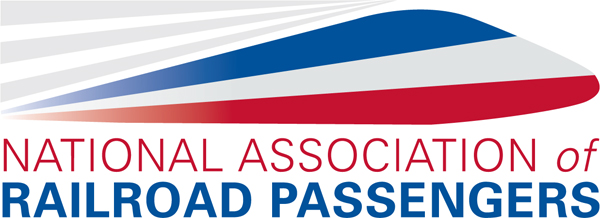Hotline #777
June 11, 1993
The House Transportation Appropriations Subcommittee yesterday approved a 1994 DOT funding bill. It has $351 million for Amtrak operations, nothing for new 403(b) service, $100 million for Amtrak capital, and $130 million for NECIP -- a 40/90 split between on-going projects and Boston electrification. This year's House numbers are higher than what the subcommittee approved a year ago. The Amtrak operations figure is $20 million higher than what was enacted for 1993, but Amtrak capital and NECIP are a total of $139 million lower than enacted.
There was nothing for the Clinton high-speed corridor program, as envisioned in H.R.1919. Chairman Bob Carr (D.-Mich.) said he would not fund the program because it is not authorized, but his action is viewed generally as staking out a negotiating position for conference with the Senate.
The Senate Appropriations Committee approved a 1993 supplemental funding bill on June 8 with $50 million for Amtrak, as opposed to $51 million in H.R.2244. It has been combined with another House bill and is proceeding in the Senate as H.R.2118.
The Clinton Btu energy tax looks to be dead. To partially replace it, a straight gasoline tax is under discussion -- Senator Breaux (La.) has proposed 7.3 cents a gallon -- but the transportation industry and even DOT Secretary Pena are fiercely attacking it. Also to be considered are further budget cuts, which would not brighten prospects for increasing Amtrak funding.
The director of the Central Artery project, in late May, directed the project contractor to "preserve the option of constructing" the rail link, according to the Boston Globe (June 8). The Globe said Governor Weld may make a public statement about the rail link soon.
Amtrak Capitol Corridor trains began serving Great America, at Santa Clara, Cal., on May 21, and Fremont on June 4. Both are between San Jose and Oakland.
Amtrak will reroute the Cardinal and Hoosier State, as early as this week, just south of Chicago. Amtrak is the last user of Conrail's Bernice line between Munster and South Chicago, with many 10-mph slow orders. The new route will follow Metra's Norfolk Southern commuter line from Union Station, then Union Pacific through Dolton to Thornton Jct., then Grand Trunk back to the current route. This affects no stations nor the schedule. The Indiana Association of Railroad Passengers would like to see a connection built at St. John, Ind., so trains could go north on a Conrail line to serve Hammond-Whiting, but skip Dyer.
Governor Walters of Oklahoma yesterday signed HB1078, the passenger rail trust fund bill approved by the legislature two months ago.
Two committees of the Western Association of State Highway and Transportation Officials have passed a resolution urging Congress to permit expansion of the road network on which the largest LCV trucks may operate. The full association will vote on this on June 26 at its annual meeting in Oklahoma City. If you live in the West, please tell your governors you want your state to vote against such liberalization.
The X2000 leaves Washington on June 14 at 5:30 am, stops at Philadelphia at 8:15 am, Harrisburg 10:15 am to 12:30 pm, Pittsburgh 6:15 pm, and Cleveland at 9:30 pm. It will arrive at Chicago on June 15 at 3:30 am. On June 16, it will make two round trips to Joliet and Dwight. On June 17, it will leave Chicago at 11:30 am and be on display at Normal from 2:30 pm to 6:30 pm. On June 18, it will run from Normal to Springfield and St. Louis, and make a round trip back to Springfield, returning to St. Louis. On June 19, it will be on display at St. Louis Union Station, from 10:00 am to 5:00 pm. On June 20, it returns to Chicago, with display at Springfield from 10:30 am to 1:00 pm.
A newsletter called Maglev News has reported that a maglev test track in Miyazaki, Japan, has been reactivated. It had been inactive since a test vehicle burned there in October 1991. A new version of the test vehicle has been running at about 120 mph.
